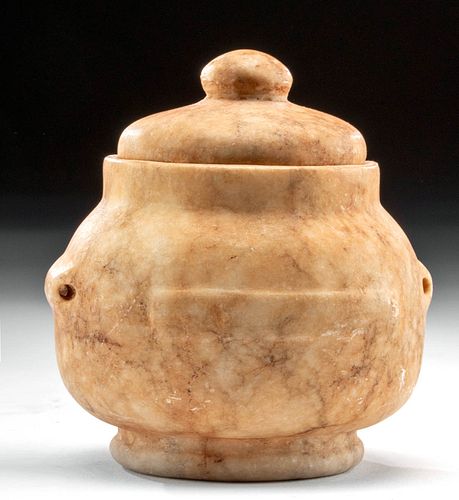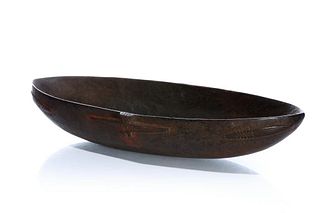Egyptian Alabaster Jar with Lid
Lot 2
About Seller
Artemis Fine Arts
686 S Taylor Ave, Ste 106
Louisville, CO 80027
United States
Selling antiquities, ancient and ethnographic art online since 1993, Artemis Gallery specializes in Classical Antiquities (Egyptian, Greek, Roman, Near Eastern), Asian, Pre-Columbian, African / Tribal / Oceanographic art. Our extensive inventory includes pottery, stone, metal, wood, glass and textil...Read more
Categories
Estimate:
$1,400 - $2,000
Absentee vs Live bid
Two ways to bid:
- Leave a max absentee bid and the platform will bid on your behalf up to your maximum bid during the live auction.
- Bid live during the auction and your bids will be submitted real-time to the auctioneer.
Bid Increments
| Price | Bid Increment |
|---|---|
| $0 | $25 |
| $300 | $50 |
| $1,000 | $100 |
| $2,000 | $250 |
| $5,000 | $500 |
| $10,000 | $1,000 |
| $20,000 | $2,500 |
| $50,000 | $5,000 |
| $100,000 | $10,000 |
| $200,000 | $20,000 |
About Auction
By Artemis Fine Arts
Jul 1, 2020
Set Reminder
2020-07-01 10:00:00
2020-07-01 10:00:00
America/New_York
Bidsquare
Bidsquare : Ancient | Near-Eastern | Asian Art
https://www.bidsquare.com/auctions/artemis-gallery/ancient-near-eastern-asian-art-5276
Ancient art from Egypt, Greece, Italy and the Near East, as well as Asian, Fossils, Pre-Columbian, Native American, African / Tribal / Oceanic, Spanish Colonial, Russian Icons, Fine art, much more! Artemis Fine Arts info@artemisfinearts.com
Ancient art from Egypt, Greece, Italy and the Near East, as well as Asian, Fossils, Pre-Columbian, Native American, African / Tribal / Oceanic, Spanish Colonial, Russian Icons, Fine art, much more! Artemis Fine Arts info@artemisfinearts.com
- Lot Description
Egypt, Late Dynastic Period, 26th to 31st Dynasty, ca. 664 to 332 BCE. A sizable jar, hand-carved from a creamy white alabaster with darker banded inclusions. The piriform body rests upon a disc-shaped foot, with a lightly-rolled shoulder tracing upwards to a corseted neck and a pair of small lug handles. The discoid lid has a drilled central hole and sits snugly atop the vessel. This type of vessel would have likely held oils and perhaps animal fats to be used as moisturizers or other salves to protect against the harsh Egyptian sun. Size: 3.25" W x 3.3" H (8.3 cm x 8.4 cm)
Alabaster, which is a form of gypsum or calcite, was quarried along the length of the Nile River, from Giza to just south of Luxor, and the Egyptians made its carved forms famous throughout the ancient world. A thousand years later, while less common than black-figure or red-figure techniques, the Greeks made vessels like this out of pottery and painted them with white clay paint to imitate this beautiful stone.
Provenance: ex-Phoenicia Holyland Antiquities; ex-Edgar L. Owen. Catalogue published on Thursday August 21, 1997, lot # 234
All items legal to buy/sell under U.S. Statute covering cultural patrimony Code 2600, CHAPTER 14, and are guaranteed to be as described or your money back.
A Certificate of Authenticity will accompany all winning bids.
We ship worldwide and handle all shipping in-house for your convenience.
#155750Intact, with light wear on surface commensurate with age including a few tiny chips and scratches. Rich deposits as shown. Lid fits into rim but is not a tight fit.Condition
- Shipping Info
-
All shipping is handled in-house for your convenience. Your invoice from Artemis Gallery will include shipping calculation instructions. If in doubt, please inquire BEFORE bidding for estimated shipping costs for individual items.
-
- Buyer's Premium



 EUR
EUR CAD
CAD AUD
AUD GBP
GBP MXN
MXN HKD
HKD CNY
CNY MYR
MYR SEK
SEK SGD
SGD CHF
CHF THB
THB
















